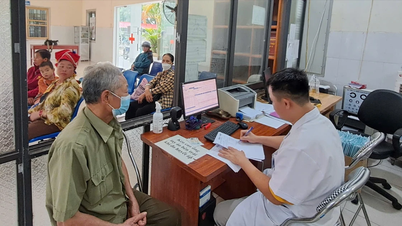The Law on Social Insurance (SI) 2024 takes effect from July 1, 2025, including regulations to reduce the minimum social insurance payment period to receive pension from 20 years to 15 years.
However, in some cases, employees who are of retirement age but have not contributed enough years still have the opportunity to access pension.
Conditions for participating in social insurance for less than 15 years to receive pension
Inheriting current regulations, the Social Insurance Law 2024 continues to provide regulations to help late social insurance participants have the opportunity to receive pensions.
Accordingly, employees who meet the retirement age requirements but have not paid compulsory social insurance for 15 years can also receive pension.
However, the law stipulates that employees must have paid compulsory social insurance for at least 14 years and 6 months. The remaining months (6 months) can be paid at once to have 15 years of social insurance participation. The monthly payment is equal to the total payment of the employee and the employer before the employee quits the job.
The earliest time to make a one-time payment for the missing months is the month immediately preceding the month eligible for pension according to regulations.
Notably, the 2024 Social Insurance Law stipulates that people who work in arduous, toxic and dangerous environments for 15 years or more or have reduced working capacity can retire 5-10 years earlier, depending on the case.
However, the condition for employees in the above group to retire, in addition to meeting the age requirement, is to have paid social insurance for 15-20 years, depending on the case.
For example, Mr. K retired in April 2027 and received his pension when he turned 55. He paid social insurance for 30 years, of which 15 years were spent in a heavy, toxic, or dangerous job; his working capacity was reduced by 81%.
Mr. K's pension rate is calculated as follows: The first 20 years are calculated at 45%; from the 21st year to the 30th year is 10 years, plus: 10 x 2% = 20%; the total of the two above rates is: 45% + 20% = 65%.
Mr. K retired 1 year and 9 months early, so the deduction rate due to early retirement is 2% + 1% = 3%. Thus, Mr. K's monthly pension rate is 65% - 3% = 62%.
For voluntary social insurance participants, the new law also stipulates a reduction in the minimum number of years of social insurance contributions to receive pensions for this group from 20 years to 15 years. However, they need to pay directly for 10 years, the remaining amount is 5 years and can be paid at once.
The above provisions of the law help many people have the opportunity to access pensions.
When do I get my retirement benefits?
The new Social Insurance Law stipulates that the maximum pension level for employees is 75% of the average salary used as the basis for payment, corresponding to 35 years of social insurance payment for men and 30 years of social insurance payment for women.
Each year of social insurance payment exceeding 35 years for men and 30 years for women before reaching retirement age as prescribed is calculated as 0.5 times the average salary used as the basis for social insurance payment.
Each year of social insurance contribution exceeding 35 years for men and 30 years for women after reaching retirement age as prescribed is calculated as 2 times the average salary used as the basis for social insurance contribution.
For example, Mr. D works under normal working conditions, at the time of retirement age, he has paid social insurance for 38 years, but Mr. D does not retire to receive a pension but continues to work and pay social insurance for 3 more years before retiring to receive a pension. When he retires to receive a pension, Mr. D has a total time of social insurance payment of 41 years.
Thus, in addition to his pension, Mr. D is also entitled to a one-time benefit calculated as follows: 3 years of social insurance contributions greater than 35 years before retirement age, each year is equal to 0.5 times the average salary used as the basis for social insurance contributions: 3 years x 0.5 = 1.5.
3 years of social insurance payment is more than 35 years after retirement age, each year is equal to 2 times the average salary used as the basis for social insurance payment: 3 years x 2 = 6.
Thus, Mr. D is entitled to a one-time pension upon retirement equal to 7.5 (1.5 + 6) times the average salary used as the basis for social insurance contributions.
The benefit level for male workers is equal to 45% of the average salary used as the basis for Social Insurance contributions corresponding to 20 years of participation. Each subsequent year of contribution is added 2% until the maximum benefit rate reaches 75%, corresponding to 35 years of participation. Female workers working under normal conditions, reaching retirement age, are calculated at 45% of the average salary used as the basis for social insurance contributions, corresponding to 15 years of participation. Each subsequent year of accumulation is added 2% until reaching a maximum of 75%, corresponding to 30 years of participation. |
(According to PLO)
Source: https://baolaocai.vn/tu-1-7-tham-gia-bao-hiem-xa-hoi-tu-10-den-tren-14-nam-co-co-hoi-nhan-luong-huu-post404135.html




























































![[Photo] General Secretary To Lam attends the launch of 3 digital platforms serving the implementation of Resolution No. 57-NQ/TW](https://vphoto.vietnam.vn/thumb/402x226/vietnam/resource/IMAGE/2025/7/2/d7fb7a42b2c74ffbb1da1124c24d41d3)
































Comment (0)